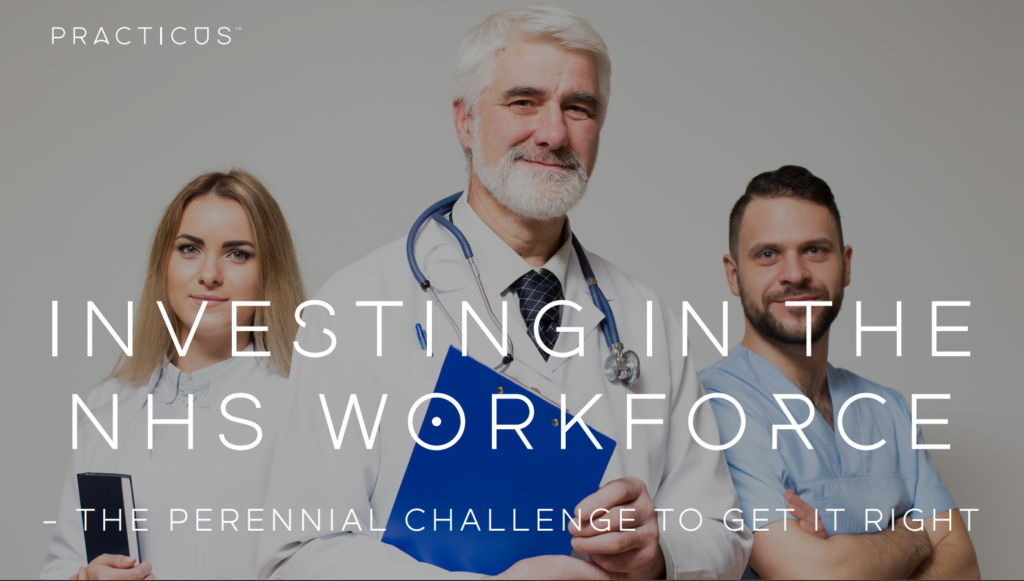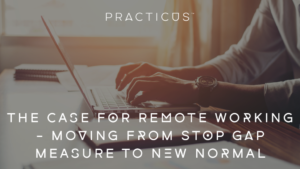Investing in the NHS Workforce?
The Perennial Challenge to Get it Right
NHSE has set 10 priorities for 2022/23 to aid operational planning guidance. Our NHS Team has writtern a series of blogs outlining the challenges and possible solutions. Here we take a closer look at
NHS Priority 1 – Investing in our workforce.
Written by Raj Bharadva with insights from current interims we are working with.

There are many NHS Priorities that can benefit from the specific knowledge and expertise of a skilled and flexible interim. We are a leading provider with a strong network of experiencd Interims. Need an Interim? Get in touch
People are the Lifeblood of the NHS
Without good people delivering quality care, there is no NHS. The NHS is the biggest employer in Europe of highly skilled professionals. NHS England employs 1.2m, while a further 300,000 work for the NHS in Scotland, Wales, and Northern Ireland. That is one in every 25 working age adults, three quarters of whom are women. It does not include those working in Social Care. Working in the NHS demands the highest levels of skill and compassion, and the NHS attracts some of the best people from home and abroad. But, over the past decade, workforce growth has not kept up with the need. Staffing capacity issues often leave NHS workers in firefighting mode.
How Big is the Workforce Shortage
Increasing demand for its services from an aging population and financial constraints have been root causes of workforce supply and retention issues for many years, now exacerbated by the Covid pandemic. With unfilled vacancies rising to 110,192 according to official figures in Dec 2021, including 39,652 nurses and 8,158 doctors, there is a growing sense of crisis among NHS leaders.
Analysis by the King’s Fund suggests the NHS workforce gap could reach almost 250,000 by 2030. Nursing is facing one of the greatest problems with one in eight posts vacant. The Interim NHS People Plan identified nursing shortages as “the single biggest and most urgent we need to address.” This is partly due to the integral role of nurses in delivering the NHS Long Term Plan, but also due to the absolute number of vacancies. There are significant shortages in learning disability, primary and community nursing, whilst the mental health nursing workforce dropped by 11% between 2009 and 2019, resulting in a critical shortage today.
Retirement is also a looming issue as the workforce is ageing. 13% of secondary care doctors and 18% of GPs will be reaching minimum retirement age in the next one to 10 years. This could mean a loss of over 25,000 doctors through retirement alone. In addition, the number of doctors taking early retirement has more than trebled over the past 13 years. Early indicators suggest the stress of working in the NHS through a pandemic may cause this to rise even further.
In an NHS Providers survey of Trust leaders, 75% cited workforce shortages as their top priority. Staff shortages are now as pressing as the financial challenge, because it will be the key limiting factor on efforts to boost NHS activity and tackle the rising backlog. To add to the gloom the most recent NHS Staff Survey results shows up these strains, especially in job satisfaction and staff wellbeing.
The need for workforce action could not be more acute. This includes the need to transform the way the NHS delivers patient care, empowers its people and cares for their wellbeing.
Why is it Difficult to Recruit and Retain Staff?
Recruiting and retaining staff has become increasingly difficult due to the pandemic making the job itself harder, training shortfalls and the unmistakable impact of prolonged pay restraints. All this leads to further budgetary pressures, also reflected in the NHS’s extensive dependency on agency staff, to routinely support day to day operations.
While pay is an important lever in attracting and keeping staff, it is also subject to tight regulations within the NHS, and part of the wider public sector pay policy. Workplace culture and environment are also strong determining factors, and making the NHS a great place to work must also be part of the bigger picture.
This is widely acknowledged in the ‘Interim NHS people Plan’ (2019), and its follow up report ‘We are the NHS: People Plan 2020/21 – Action For Us All’ (2020). These strategies were developed collaboratively across the NHS with partners including the British Medical Association (BMA), the Royal College of Nursing (RCN), NHS managers and staff unions. At its core, the plan establishes that more needs to be done to improve retention of existing healthcare staff and transform ways of working, in addition to recruiting new workers. It could be argued the NHS People Plans are high in aspiration, but low in detail on how these strategic objectives are to be achieved.
Expert Thinkers, Great Ideas
Workforce challenges have been front and centre for NHS influencers and policymakers for a long time. Indeed, there is little new or original that we, at Practicus, can add to the depth of thinking that is out there already. However, we can remind the reader of some of the innovations taking shape, and some of the good ideas already conceived that could give decision makers some solutions to workforce challenges.
In 2019, three the UK’s best known healthcare think tanks: The Health Foundation, The King’s Fund and Nuffield Trust combined their resources and industry voices to present a collective set of key workforce findings and recommendations in their report: ‘Closing the Gap’. This report focused on primary care and nursing staff, where shortages are most severe, and looked in great detail at the critical issues of:
- Training: developing supply of new staff
- Pay and reward to attract and retain staff
- Being a great place to work and build a career
- Workforce redesign: right teams with the right skills and technological support
- International recruitment
Then the pandemic struck, throwing even more challenges at the NHS, and this timely research into the long grass. However, this collaborative thinking by leading policy influencers remains a valid piece of work with some well thought out recommendations, which deserve to be part of any plan to tackle the workforce crisis.
Closing the Gap – Key Recommendations
There are no silver bullets, but some high-impact policy actions combined with the right funding could, over time create a sustainable model for general practice and help to eliminate nursing shortages. Key ideas include:
- Growing the Workforce
The supply of domestic healthcare staff needs to grow substantially. The government has recognised this with initiatives to expand medical education, boost the number of nurses and other healthcare students, and open up new routes into healthcare careers such as apprenticeships. The Government also heeded the call to restore some £5,000 bursary support for student nurses, resulting in a record increase of students enrolling to study nursing and midwifery in England for two years running. According to UCAS, there were 29,740 students in 2020 and 30,185 students in 2021. But training takes time, so to avoid nurse staffing shortages acting as a brake on the delivery of NHS service, the report highlights that recruitment of 5,000 nurses from overseas will be needed each year until 2023/24. - Team-based General Practice
General practice is in crisis because of difficulties in recruiting and retaining GPs alongside a growing and increasingly complex workload. The Government pledge to recruit 6,000 more GPs by 2024 is unlikely to be met. Indeed, the number of GPs in England has fallen every year since 2015 when there were 29,364 full-time-equivalent GPs. However, by September 2020 this number had dropped to 27,939, and it has fallen even further since then, to 27,920. Those that are left are stretched more than ever. A well-functioning primary care system is critical for the health of the nation, and but also to reduce A&E and hospital workloads.
National efforts to increase the number of GPs in training needs to continue, but theonly tangible way to tackle the growing shortfall of GPs is with more support for their workload by expanding the numbers of pharmacists, allied health professionals, and nurses in team based primary care. All these roles are designed to support more highly qualified staff such as the registered nurse or doctor. The NHS has committed to funding 26,000 of these roles, such as clinical pharmacists, community link workers, first-contact physiotherapists and primary care paramedics. However, this target is unlikely to be achieved by 2023/24.
- Making the NHS a Great Place to work
The think tanks proposed a number of initiatives to make the NHS a better place to work and where staff want to build a career. They suggest building a universal ‘offer’ to staff includes fair treatment for all staff, pay terms and opportunities, continuing professional development, and flexibility to achieve work-life balance. Meaningful action on equality and inclusion must be at the heart of the offer to staff, building on existing initiatives.
Responding to the needs of the pandemic, and the current pressures being experienced in all areas, especially acute care and ambulance services has led to high-levels of stress and burnout. This needs managing to avoid or reduce further staff attrition. A collaborative, inclusive and compassionate culture must be embedded in each organisation to tackle chronic excessive workloads and introduce the flexible working hours that staff say they need.
Future Workforce Planning
Forward capacity planning Is a critical area, and the industry is calling for Government to do more to be transparent about how the NHS will close the gap in its workforce shortages and by when, including projections for the next 10-15 years. But the call for long-term sustainable workforce planning beyond 5 years has so far been resisted, not by the DHSC or HEE, but by the Treasury.
The King’s Funds most recent workforce observations, (supported by parliamentary briefings), give the government credit for channelling more funds towards healthcare education. However, this is being done in the absence of a costed forecast plan to address the long-term crisis. How many doctors, and nurses will the nation need in 10 or 15 years’ time? It is true 2022/23 NHS operational planning guidance makes workforce a top priority and gives systems instructions to accelerate work towards growing and transforming their workforce, but this is not supported by detail and budgets.
The workforce crunch hinges on two fundamentals: retention: making the most of the existing workforce and attraction: hiring new and long-term loyal staff. This involves understanding what the current workforce capacity situation is for each of the various specialties then comparing it to the anticipated service requirement. The requirement will be influenced by many factors including national specialty guidelines, numbers of patients, and where they live and need treating. A comparison of workforce capacity to demand will highlight pain points and quantify the scarcity of resources. Training and recruitment resources can then be more targeted with the aim of filling the gaps.
While Integrated Care Systems (ICSs) are a new part of the health and care infrastructure, they will be able to develop their own workforce plans for their own systems. Overall, there is an opportunity for ICSs to move the NHS system away from a centralised, opaque approach to workforce planning, to one that is more dynamic and responsive to local need, and is driven by more transparent and inclusive analysis. Similarly, there is an opportunity to move from an absence of workforce planning in adult social care to at least consider this at a system level. However, achieving this will require adequate resources and an overall national strategy which is clear about the national and ICS level roles and how they should fit together.
Conclusion
With a backdrop of ever rising demand, struggling capacity, and long waiting lists, the problem of exhausted staff and high attrition rates will continue. Workforce gaps feed unmanageable workloads and a vicious cycle that must be broken.
To do this, think tanks and healthcare watchers point to the need to train more staff, allow more to come here from overseas, and reward and treat them better. These important steps need to be coupled with the rapid scaling up of new technology and data sharing and redesigning workflows to remove clinicians away from any work not essential to patient care.
Among those holding the purse strings and levers of power in government and within NHSE, think tanks are calling for a sense of urgency and awareness of the scale of the workforce challenge. Post pandemic there is a real threat to the viability of NHS services and patient care, in a service that is increasingly struggling to stay afloat.
NHS Team
Interim Management
PMO as a Service
About Practicus
Our purpose is to help people and their organisations navigate change. We take an integrated approach to change, combining robust change management and project management with subject matter expertise in strategy, technology, behaviour, data and operational efficiency.
Practicus is one of the leading interim management agencies and in addition to Interim Staffing, we also provide Consulting, Permanent hires and Advising.



